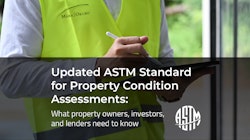

M|O Perspectives
Check back here for our thoughts on the latest developments in our industry.
Does your roof warranty have you covered?
Feb 12, 2016
Warranty issues on roofing are a common problem in the world of property investment and building construction. Unknowns stem from the fact that there is a wide range of roof manufacturers, all of which have their own warranties for differing systems. Adding to the confusion are various coverage “add-on” options, along with wind up-lift requirements, and countless codes for new and existing construction in different geographic locations.
In general, common roof coverage options include, but are not limited to:
- Material only covered for manufacturing defects
- Material only with leak coverage due to manufacturing defects
- Material and labor coverage due to manufacturing defects
- Material and labor coverage due to manufacturing or installation issues (NDL or No Dollar Limit Warranty)
- Material and accessories (fasteners, insulation, flashings, etc.)
Your first line of defense
A new roof can be expensive, but it’s also the first line of defense for keeping weather—and damage—out of your building. To minimize financial risks with your project, finding the right warranty to meet your needs should be as important as is finding the right contractor to install the roof.
Additionally, just having a document in your files for a few years doesn’t mean your warranty is still in place. Like changing the oil and spark plugs in your car, not doing so could result in costly issues. If you do not perform periodic maintenance on your roof, debris build-up could cause ponding water, which could lead to leaks and possible damage to the structure and interior furnishings, all while not being covered under your warranty. Roof repairs can be costly, but structural and incidental damages to tenant finishes and belongings can be even more pricey and time consuming to repair or replace.
Maintaining warranty terms is also a key for retaining the value of your investment. If you’re selling a project with a warrantied roof, you want to be sure the required repairs and maintenance have been performed and the manufacturer doesn’t have a means for voiding the terms. It’s a good measure to keep a log near the roof access to document all the people who have done work on roofing or mechanical systems.
Avoid voiding the warranty
As with other elements of the exterior envelope, proper oversight of roofing installation can be critical to obtaining and/or maintaining a warranty. Often times a roofing manufacturer will rely on their factory-approved subcontractor to install the roof per the specifications. Although the manufacturer may have approved this subcontractor, if issues arise after construction and it is found the roof was not installed properly or per specifications, the manufacturer could potentially void the warranty.
For example, on a recent project that Marx|Okubo reviewed, the manufacturer’s approved installer was applying the last section of a large roof over a 290-unit apartment building when we found significant rain water standing on the roofing base ply. Unfortunately the subcontractor was installing the rigid insulation directly over the wet substrate. Per our notification, the general contractor stopped work, bringing in an exterior-envelope consultant to review the issue. The consultant concurred that the installation did not meet the specifications or roofing manufacturer’s requirements, and a subsequent full investigation showed roughly 30% needed to be replaced.
For buildings under construction, it’s important to check specifications to see if warranty requirements are spelled out clearly. You can follow through with the submittal process to see the roofing manufacturer’s sample warranty to ensure it will meet the needs of your project. For existing buildings, it’s paramount to check for all current documentation defining roofing requirements and associated warranties. And for buildings with recent re-roofing, be sure to locate the new warranty to understand current coverage and inspections performed. This will help you to attempt to confirm that the installation was per the applicable codes and designer’s specifications.
Understanding wind up-lift
Another warranty issue is wind, which can create lateral loads on a building’s structural system and create up-lift on a building’s roof, or tear it off completely. However, building code requirements dictating wind up-lift requirements are different depending on which region of the country you are in and can vary by building use and height, among other variables. In fact, the wind up-lift requirement for a two-story building on one parcel will likely be different than the one for a 20-story building on the parcel right next door.
Marx|Okubo recently ran into this issue when looking at an older warehouse in Utah. While the recently installed single-ply roof looked good from the roof surface, a more detailed review around the perimeter showed that the membrane was not properly anchored to the parapet wall or terminated below the coping. Recent high winds had caused portions of the membrane to begin lifting off the roof surface and further review showed this was an issue on all of the buildings. The installer was required to repair all of the roofs, and the manufacturer returned to perform a more thorough inspection prior to signing off the repairs met the terms of the warranty.
It’s important to note that often manufacturer roof warranties only cover basic wind loads and may not even cover the code-required wind up-lift loads for your particular building. Try to work with the manufacturer to amend the warranty to at least meet the code requirements. If unable to revise the warranty, continue to work with your installer and third-party inspectors. While the warranty is a valuable document, the installer and inspector are often more valuable as they can confirm that the installation was done properly while meeting the code and specifications.
If you have additional questions regarding a roofing warranty or code on either an existing building or new construction, don’t hesitate to call a Marx|Okubo engineering consultant at an office location near you. We’re here to help take the guesswork out of your real estate project or investment, and arm you with information you need to make smart project and financial decisions.

What we do.
- Owner's Representation
- Property Condition Assessment
- Project Management
- Constructability Reviews
- Repair | Reconstruction
- Facility Condition Assessment
- Construction Loan Monitoring
- Accessibility
- Building Enclosure
- Fire | Life Safety
- Mechanical | Electrical | Plumbing
- ESG | Sustainability & Resiliency
- Structural Engineering
- ASAP® - Automated Structure Alert Program
Marx|Okubo is a national architecture/engineering/construction consulting firm that works with real estate owners, investors and lenders—at every point of the property lifecycle—to evaluate their building projects, solve complex challenges and implement tailored solutions. We help clients understand their projects’ complexities, so they can make more informed decisions and, ultimately, mitigate their risk.




